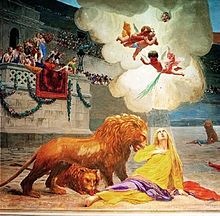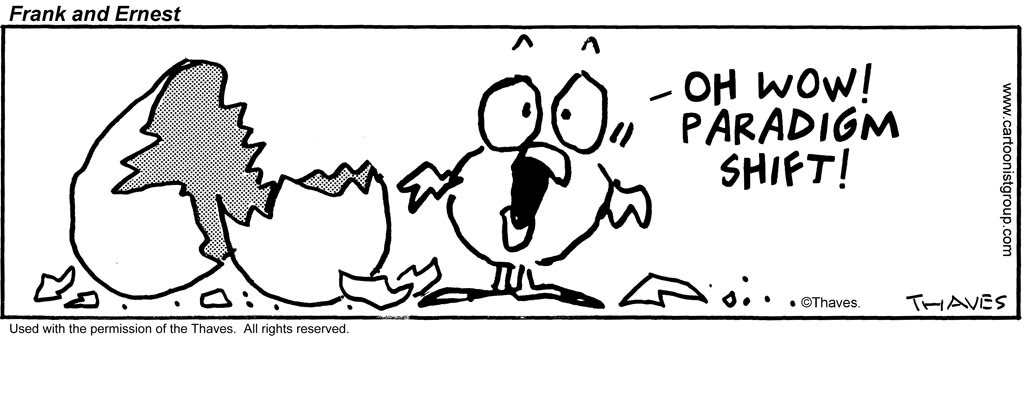The church is called to make disciples.
In part 1, Bob showed that Jesus’ great commission mandates discipleship, and argued that our great commission efforts typically fall short of that goal. Evangelism is necessary, but making disciples is essential. Now Bob goes on to discuss what a discipled nation looks like.
For many people, the idea of discipling a nation or community seems absurd or impossible. But if we would abandon our emphasis on counting converts and churches and return to our own ancient missiology of incarnation, I believe the world would be drawn to Jesus. Evangelism would be a by-product of the way we live, the way God shows Himself through us, rather than a separate category of Christian activity.
Here are five examples of discipled cultures or nations.
The early church
 Rodney Stark’s study of the early church convinced him that the primary cause of the growth of Christianity during the early part of the Classical period was the lifestyle of the early Christians. They incarnated Jesus. It was the beauty of what Stark calls a “new kind of humanity” that drew others to become citizens of the Kingdom of God and of His Christ.[1]
Rodney Stark’s study of the early church convinced him that the primary cause of the growth of Christianity during the early part of the Classical period was the lifestyle of the early Christians. They incarnated Jesus. It was the beauty of what Stark calls a “new kind of humanity” that drew others to become citizens of the Kingdom of God and of His Christ.[1]
The Reformation
John Calvin and his ilk did not merely preach and teach the Bible. Calvin had enormous influence on the social and political dimensions of Geneva, Switzerland, and all of Europe. Tom Bloomer, provost of the University of the Nations International, has written a lucid and helpful paper, “Calvin and Geneva: Nation-Building Missions.”[2] Dr. Bloomer elaborates on the three-fold “strategy of the Reformers …
- Preaching the gospel to individuals, so that people would be saved and start to be transformed, and the church would be restored to biblical purity;
- Teaching the city, so that people would know how to live, the authorities would know how to govern, and all would know how to work in their different spheres; and
- Accountability for individuals and the leadership in spheres of society, so that the teaching would not just be theoretical but applied in all areas of life.”
The Wesleyan Revival
Christian Overman points out that Great Britain in the day of Wilberforce presented social challenges rivaling those of the West today. “Twenty-five percent of the single women in London were prostitutes. Liquor flowed so plentifully that the day became known as the ‘Gin Age.’ Gambling  was a national obsession and ruined thousands. Daylight fornication [was practiced] on the village green. Executions, known as Hanging Shows, attracted huge crowds.”
was a national obsession and ruined thousands. Daylight fornication [was practiced] on the village green. Executions, known as Hanging Shows, attracted huge crowds.”
Then God sent the Wesleyan revival. The fruit of that included William Wilberforce (and other British leaders) who “saw Christianity as something more than a private, personal religion. They saw ‘real Christianity’ having enormous implications for the whole of society.”[3]
The Great Awakening
Dr. Ralph Winter writes about a parallel revival in the United States.
In the 1700s a simultaneous awakening occurred called the Great Awakening, which both exploded church membership and led to the Declaration of Independence …
In contrast to the almost exclusively personal-salvation oriented Evangelicalism of the Second Inheritance, [the “First Inheritance” Awakening] engaged in a mountain of social reforms parallel to Wesley’s profound social impact in England. … Without this democratically governed inter-colonial model, the birth of the new nation wouldn’t have occurred in the way it did. The crafting of the U.S. Constitution was done one block away from meetings redrafting the Presbyterian Constitution. Many of the same men were involved in both meetings. Many of the same phrases occur in both documents. …
The entire period represented incredible ingenuity, innovation, and—most specifically—attention to what today we would call social transformation. In this mix Evangelicals were the main leaders—not the reluctant followers of secular initiatives.[4]
SE Asia Today
More recently, a ministry we are connected with that serves in SE Asia has seen similar results.[5] In 2005, Tai Ping village was a typical poor rural community: everyone was hungry most of the time, the houses had dirt floors and mud walls. There were no latrines. People rarely washed. Few children went to school. The people were sick, hungry, and illiterate. Most importantly, they suffered from spiritual poverty. They had a saving faith in Christ, but no knowledge of a divine plan for their lives.
Through a simple training program the people learned that Jesus died not only so they could go to heaven, but also to reconcile and restore all things (Colossians 1:19-20; Revelation 21:5). They learned that God’s plan is for them to grow mentally, physically, spiritually, and socially (Luke 2:52), that God had given them resources and abilities He wanted them to use to show His love to others. They began to help those in need with food or simple gifts.
 They plowed and harvested fields for the sick. They built houses for widows and orphans. They built roads to their farming areas. Farmers could grow enough rice to feed their families and to sell. Their income increased 5 to 10 times. Eventually they even built a bridge. The government was so impressed they invited the local TV station to film a news story on the church.
They plowed and harvested fields for the sick. They built houses for widows and orphans. They built roads to their farming areas. Farmers could grow enough rice to feed their families and to sell. Their income increased 5 to 10 times. Eventually they even built a bridge. The government was so impressed they invited the local TV station to film a news story on the church.
Eventually, the government built a school for the community as a reward for all their hard work. Now, all their children attend through high school, and for the first time ever, a number of children are attending university.
The church learned that God gave them their bodies, thus physical health mattered to God. They learned hygiene and the treatment for common illnesses. The community’s health began to transform. Neighbors saw the health of the church members improve and began to do imitate their practices. Soon, everyone in the community was using a latrine, washing before eating and cleaning their homes. Every household began gardening and eating vegetables. Today people are rarely sick. Children no longer die from diarrhea.
They learned what Scripture says about the roles of husbands and wives. They stopped beating their wives and began to show them love. Wives learn to treat their husbands with respect, and parents to show affection to their children.
People in the community became more receptive to the Gospel and the church itself was transformed. Now 90% of the community (about 700 people) profess faith in Christ, attend church, and tithe regularly. About 80% of church members actively participate in acts of service.
Similar stories could be told of many communities in the region. In fact, at least 50 communities have testified, “We no longer have poverty. We want to go to other villages and bring these truths to them.”
~
I believe change is coming. I have traveled the world, engaging with churches and Christian communities, for almost 40 years. As I meet with local church leaders they increasingly recognize that the influence of their gospel proclamation is not having the expected results on their people, communities and nations. They are hungry for answers and are finding them as they begin to emphasize obedience to Jesus teachings.
Maybe it’s time for a humble and prayerful global consideration of this issue!
- Bob Moffit
[Bob is chairman and co-founder of Disciple Nations Alliance, and president of Harvest Foundation. This two-part post is a condensation of Bob’s paper which you can read in full here.]
[1] From The Rise of Christianity
[2] http://www.biblicalworldview.com/Calvin_and_Geneva_Bloomer.pdf
[3] http://biblicalworldviewmatters.blogspot.com/2015/09/on-anniversary-of-9-11.html
[4] Ralph D. Winter, “Will We Regain the Vision of Our Forefathers in the Faith? The Future of Evangelicals in Mission” Mission Frontiers, September-October 2007
[5] For security reasons I am not identifying either the agency or the country.







2 Comments
Jon
January 28, 2017 - 3:42 amThis makes me want to take action.
I think I will. 🙂
Jon
January 28, 2017 - 3:47 amHere is the article referenced in footnote 4. I think I’ll be reading it. 🙂
http://www.missionfrontiers.org/issue/article/the-future-of-evangelicals-in-mission